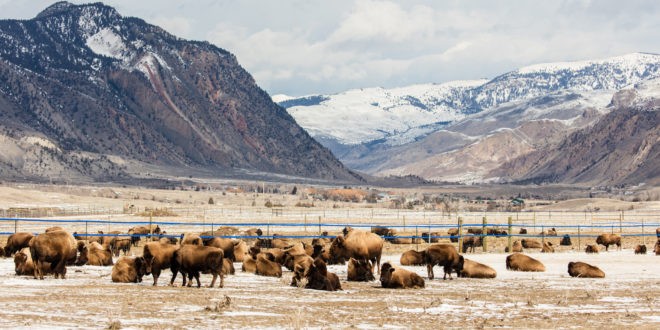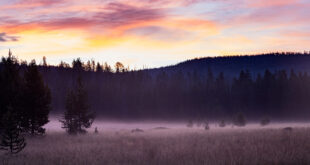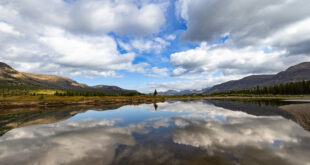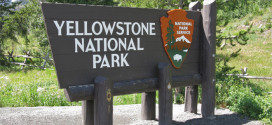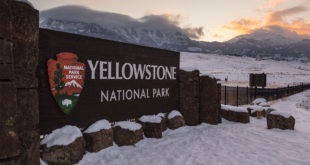Yellowstone National Park has proposed that bison managers aim to keep the bison population around 4,200 rather than 3,000.
Incidentally, 4,200 is the number of Yellowstone bison biologists expect will be in the park come summer, following the calving season.
According to the Bozeman Daily Chronicle, biologists like Yellowstone bison program coordinator Tim Reid say 4,200 strikes a better balance for the population—both ecologically and sociopolitically.
Currently, there is no formal proposal to raise the quota. According to the Chronicle, the idea has been informally broached at recent bison management meetings. Mark Deleray, Bozeman regional supervisor for Montana, Fish, Wildlife and Parks, says the agency needs to do a formal analysis before signing off.
But he’s not opposed to the proposal outright. “It’s definitely worth discussing,” he told the Chronicle.
Montana state veterinarian Marty Zaluski told the Chronicle he couldn’t say whether 4,200 bison was acceptable from a disease risk standpoint. He did emphasize, however, that 5,000 bison was too many. From the Chronicle:
The Interagency Bison Management Plan’s written goal is 3,000. The plan, written in 2000, is meant to prevent the spread of brucellosis, a disease that can cause animals to abort. Passed through afterbirth, the disease is feared by the livestock industry.
The plan uses population control as a way to prevent bison from transmitting the disease to cattle. There have been no documented cases of a bison transmitting the disease to cattle.
But annual culls and hunts haven’t brought the population to 3,000. Instead, it’s swung back and forth, peaking at 5,500 in 2016. What typically follows years of significant growth in the population are large culls, and Reid said managing for 4,200 would reduce the need for those.
“It gets us out of this kind of episodic cycle of the last 10 years of population build up and extremely large culls that are unpopular,” Reid said.
This year, over 1,100 bison were killed by hunters or shipped to slaughter, which was much higher than the goal of 600 to 900 proposed by bison managers in fall 2017. The winter 2017 cull was also large, topping out at over 1,200.
This winter saw a spate of activity and protest against bison operations in Yellowstone National Park. Five people were arrested for attempting to obstruct the shipment of Yellowstone bison to slaughter. Two were arrested for chaining themselves to the squeeze chute where biologists collect blood samples while a third was arrested for trespassing. Another pair of protesters were arrested after chaining themselves to concrete barrels along the Stephens Creek road.
All five belong to Wild Bison Defense, a bison advocacy group that protests the treatment of Yellowstone bison.
In addition, fences at Stephens Creek were cut twice this year, releasing bison being held there. The first cutting happened in January, with over 50 bison released. The second occurred in February, with over 70 bison released. The National Park Service has opened investigations into each incident.
Some of the bison released from Stephens Creek were being held in quarantine, under a new program to clear Yellowstone bison of brucellosis. At last count, the park has over 90 bison it plans to quarantine. Further, the park announced in late April that it plans to ship bison to the Fort Peck Indian Reservation in eastern Montana. The Fort Peck Tribes has long expressed interest in raising a conservation herd of bison.
Yellowstone’s 4,200 bison proposal got mixed reception from environmental and bison advocacy groups, according to the Chronicle.
Matt Skoglund of the Natoinal Resources Defense Council, for instance, argued that the bison population count shold be fluid, not fixed, reflecting the movement of bison across the landscape. Stephany Seay of the Buffalo Field Campaign, meanwhile, agreed 4,200 bison is better than 3,000, but argued the population should be much, much higher.
 Yellowstone Insider Your Complete Guide to America's First National Park
Yellowstone Insider Your Complete Guide to America's First National Park
